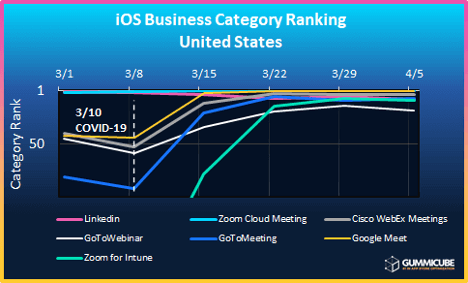
How to Write an Apple App Store Description
Posted on July 17th, 2024
Learn how to approach App Store descriptions the right way so you can effectively engage and convert users.

App Store Optimization is an ongoing process. If you want to maintain consistent downloads and high keyword rankings, you need to continue striving to improve. This makes iteration one of the ASO Best Practices that can help apps compete as time goes by and trends change.
How can iterative updates help your app? Each new iteration can provide improvements, new insights or tests for your optimization, which we shall explore.
Is your creative set in need of improvement? There’s always room to test and grow, which is why each new app launch should build upon the success of the previous ones.
We can see this in action with creative sets. App developers can and should A/B test new creative variants to see what users respond to best. Each test provides valuable insights on what gets the most clicks and downloads, from screenshot copy to background colors.
So what do you do when you have that information? Naturally, you apply it to the creatives for the next update. The next iteration uses the insights you gained from testing to include creative sets that convert even more users, thus improving growth in the stores and profits.
New iterations can find creatives that attract more users. If you test new creative variants, you might find one that brings in more conversions than your existing set. To stick with the previous version would mean to pass up on a chance to increase your conversions, but you can only learn this by designing and testing new iterations.
Refusing to launch a new iteration is only costing your app potential conversions. Will you be satisfied with what you have when you know you can reach more users?
We can see iterative creative updates for many apps, such as Yahoo Mail. Early on, the screenshots placed the handset against a city background, using purple font that reflected the brand’s color scheme. That was updated to change the background and font, adjust the positioning of the handset and provide a new value proposition.
The next update then built upon that growth. It maintained the background and font, but adjusted the value proposition and screenshot copy. This lets us see a clear design progression over time.



In addition to improving conversions, iterative updates can help you target the most valuable keywords. After your app indexes for your targeted keywords, you can see what ones you’re ranking for and which ones can be replaced.
Targeting new keywords with each update can help an app in several ways:
If a keyword is providing no value, why should you keep it? Targeting new keywords will only expand your possibilities. Each update provides new terms your app can rank and grow for while helping prevent it from losing its current positioning.
As an app can only target so many keywords in a single update, it will take multiple iterations to build relevance and rankings for multiple terms. With enough iterations and growth, an app can begin to rank from anywhere from hundreds to even thousands of keywords.
Seasons turn. User tastes change. These are constants in the app marketing world. The key to success is adaptation, which can only be done by launching new iterations.
User tastes and needs can change. Sometimes it’s due to new technology, other times to new events. What matters is that developers launch new iterations to keep up with current events.
When users began working remotely due to shelter in place orders, it created a significant change in user demand. Team communication and collaboration apps saw a significant growth in the App Store and Google Play Store, making that an important trend to capitalize on.

It’s worth remembering the trends rise and fall over time. As the world has adapted to current conditions, other apps in the category are beginning to regain their previous positioning.
Developers need to be prepared to launch new iterations based on changing trends as they adjust, rather than trying to keep up after the fact or relying on things returning to “normal” quickly.
Trends that change with each season can be easier to predict. This is why seasonality is important to consider when launching new iterations.
Seasonal iterations of an app should focus on approaching needs and events. Educational apps can focus on “back to school” or “remote learning” terms, due to current trends. Shopping apps that update when the holidays approach can launch seasonal iterations, such as for “Black Friday” keywords.
The seasonal iterations can use the same learnings gained from previous updates. If A/B tests determine that users respond well to a specific color scheme or design, the new iteration can continue using that design while integrating seasonality.
Once the seasons change, the next iterations can adjust accordingly while building upon the last update’s successes.
A perfect App Store listing is not made in a single update. ASO is an iterative process, requiring research and updates over time. By testing new updates, learning from past successes, targeting new keywords and adjusting for trends and seasons, you can position your app for better growth.
Iteration is a key aspect of App Store Optimization. Each new iteration is another step closer to achieving or maintaining success on the App Store and Google Play Store.
Want to learn more about App Store Optimization? Contact Gummicube and we’ll help get your strategy started.

Learn how to approach App Store descriptions the right way so you can effectively engage and convert users.

Learn how to grab your audience's attention through effective and engaging app store preview videos.

Welcome to this week’s ASO Weekly - The App Store halts gambling ads amidst outcry and the Apple takes a bite out of NFT app sales.